Class 6 Geography Chapter 5 Notes - Major Domains of the Earth
| Table of contents |

|
| Introduction |

|
| 1. Lithosphere |

|
| 2. Hydrosphere |

|
| 3. Atmosphere |

|
| 4. Biosphere: The Domain of Life |

|
| Frequently Asked Questions (FAQs) |

|
Introduction
The earth consists of 4 different types of major domains. The major domains of the earth include:
- Lithosphere
- Atmosphere
- Hydrosphere
- Biosphere
The earth is a really big place and there is no doubt that most of the major domains of the earth tend to mix together to create the environment that we live in.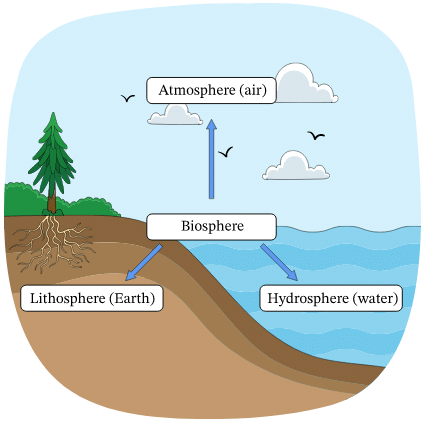
- Lithosphere: The solid portion of the earth.
- Atmosphere: The gaseous layers that surround the earth.
- Hydrosphere: Water covers a very big area of the earth’s surface and this area is called the Hydrosphere.
- Biosphere: It is the narrow zone where land, water and air together are found.
1. Lithosphere
- The solid portion of the earth is called the lithosphere. It is composed of rocks of the earth’s crust. There is a thin layer of soil on top that contains mineral nutrients which sustain various organisms.
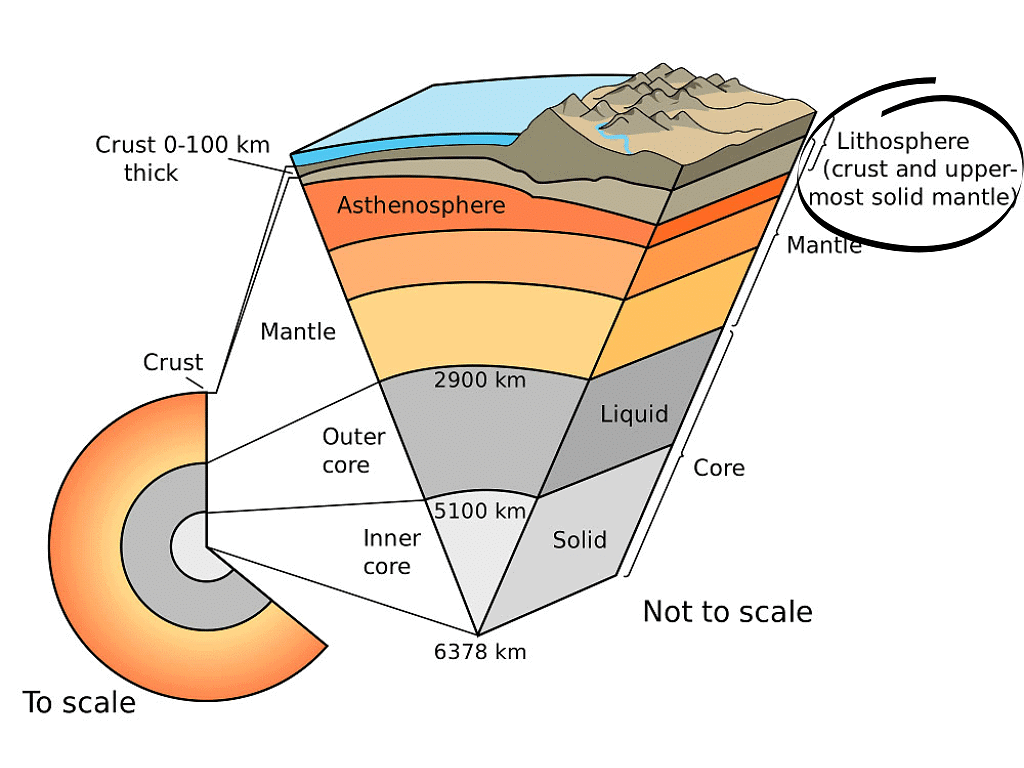
- The earth’s surface can be divided into two main parts, viz. the continents and the ocean basins.
(i)Continents:The huge landmasses on the earth are called continents.
(ii)Ocean Basins:The huge water bodies on the earth are called ocean basins.
Continents
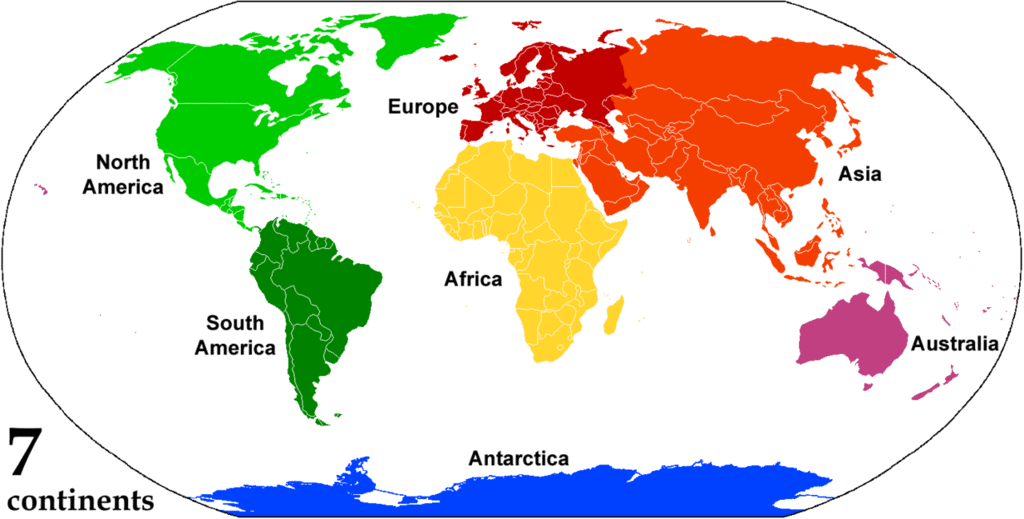
There are seven continents and all of them are separated by large water bodies. The seven continents of the world are; Asia, Europe, Africa, North America, South America, Australia and Antarctica.
Asia
- Asia is the largest continent, covering about one-third of the Earth's total land area.
- It is located in the Eastern Hemisphere.
- The Tropic of Cancer passes through this continent.
- Asia is separated from Europe by the Ural Mountains on the west.
- The combined landmass of Europe and Asia is called Eurasia.
Europe
- Europe is much smaller than Asia.
- The continent lies to the west of Asia.
- The Arctic Circle passes through Europe.
- It is surrounded by water bodies on three sides.
Africa
- Africa is the second-largest continent after Asia.
- The Equator (0° latitude) runs almost through the middle of Africa.
- A large part of Africa lies in the Northern Hemisphere.
- It is the only continent through which the Tropic of Cancer, the Equator, and the Tropic of Capricorn pass.
- The Sahara Desert, the world's largest hot desert, is located in Africa.
- Africa is surrounded by oceans and seas on all sides.
- The world's longest river, the Nile, flows through Africa.
North America
- North America is the third-largest continent in the world.
- It is connected to South America by the narrow Isthmus of Panama.
- The continent lies entirely in the Northern and Western Hemispheres.
- North America is surrounded by three oceans: the Pacific Ocean, the Atlantic Ocean, and the Arctic Ocean.
Isthmus:A narrow strip of land which joins two landmasses is called the isthmus. North America lies in the northern hemisphere and western hemisphere.
South America
- South America lies mostly in the Southern Hemisphere.
- It is surrounded by the Atlantic Ocean on the east and the Pacific Ocean on the west.
- The Andes, the world's longest mountain range, runs through South America from north to south.
- The Amazon River, the world's largest river, flows through this continent.
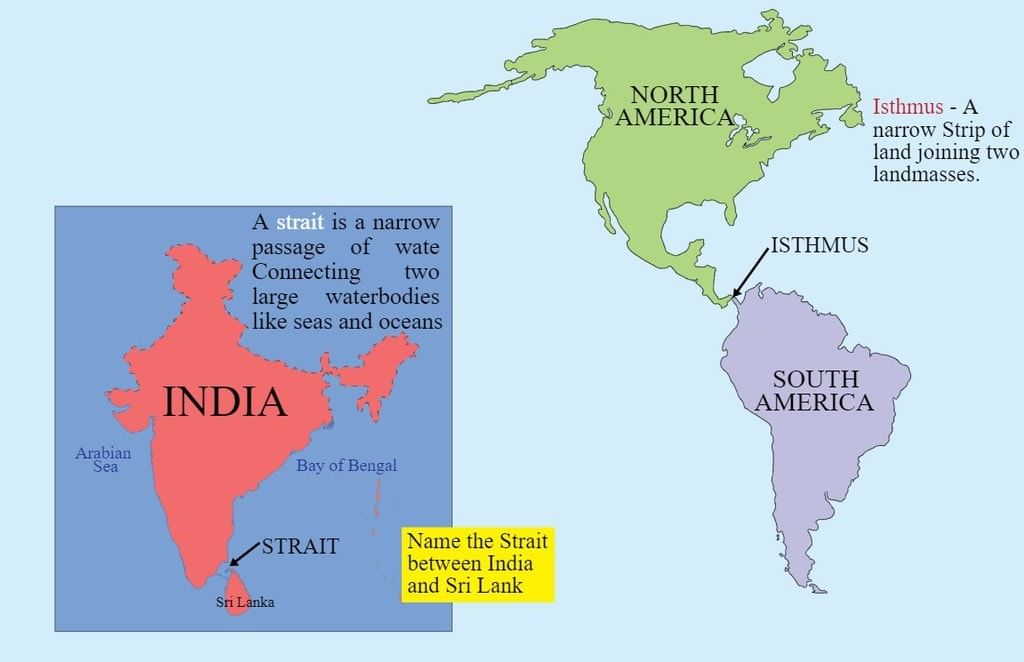
Australia
- Australia is the smallest continent.
- It lies entirely in the Southern Hemisphere.
- It is surrounded on all sides by oceans and seas.
- Australia is known as an island continent
Antarctica
- Antarctica is a vast continent located entirely in the Southern Hemisphere.
- The South Pole lies near the center of Antarctica.
- It is permanently covered with thick ice sheets as it lies in the South Polar Region.
- There are no permanent human settlements in Antarctica.
- Many countries have research stations there, including India.
- India's research stations in Antarctica are named Maitri and Bharati.
2. Hydrosphere
- The earth is called the blue planet. More than 71% of the earth is covered with water and 29% is with the land.
- The hydrosphere consists of water in all its forms like oceans, rivers, lakes, glaciers, underground, and as water vapor in the atmosphere.
- More than 97% of the Earth’s water is found in the oceans and is too salty for human use.
- A large proportion of the rest of the water is in the form of ice sheets and glaciers or under the ground and a very small percentage is available as fresh water for human use.
Oceans
All the oceans of the world are connected to each other. Due to this, the level of seawater is the same everywhere. The elevation of the land is measured from the sea level and the sea level is taken as zero. Waves, tides and ocean currents are the three main movements of ocean water. There are five major oceans, viz. Pacific, Atlantic, Indian, Arctic and Southern oceans.
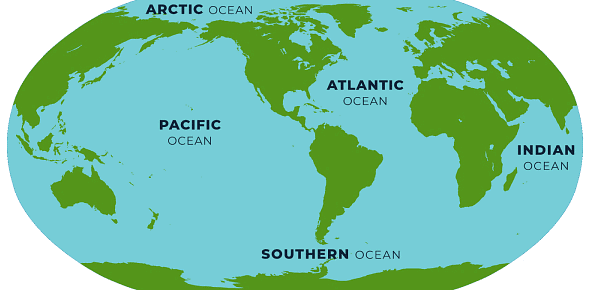
Pacific Ocean:
- The Pacific Ocean is the largest ocean, covering one-third of the Earth's surface.
- It contains the Mariana Trench, the Earth's deepest point.
- The Pacific Ocean is almost circular in shape.
- It is surrounded by Asia, Australia, North America, and South America.
Atlantic Ocean
- The Atlantic Ocean is the second-largest ocean in the world.
- It has an ‘S’ shape.
- It is bordered by North and South Americas on the west, and Europe and Africa on the east.
- Its coastline is highly indented, making it ideal for natural harbors and ports.
- The Atlantic is the busiest ocean for commerce.
Indian Ocean
- The Indian Ocean is the only ocean named after a country, India.
- It has an almost triangular shape.
- It is bordered by Asia in the north, Africa in the west, and Australia in the east.
Southern Ocean
- Southern Ocean surrounds Antarctica.
- It extends northward up to 60° south latitude.
Arctic Ocean
- The Arctic Ocean lies within the Arctic Circle and surrounds the North Pole.
- It is connected to the Pacific Ocean by the Bering Strait, a narrow stretch of shallow water.
- It is bordered by the northern coasts of North America and Eurasia
3. Atmosphere
The Earth is surrounded by a thin layer of gas called the atmosphere, which is very important for our planet. Atmosphere plays an important role in the environment on earth. It gives us the oxygen we need to breathe and shields us from the harmful rays of the sun. The atmosphere reaches up to about 1,600 kilometers above the Earth's surface.
Layers of the Atmosphere
The atmosphere is made up of five different layers, each with its own characteristics. These layers are the troposphere, stratosphere, mesosphere, thermosphere, and exosphere. Scientists divide these layers based on factors like composition and temperature.

Composition of the Atmosphere
- The atmosphere is mostly made up of nitrogen (78% ) and oxygen (21% ), which together account for about 99% of clean, dry air.
- Other gases, such as carbon dioxide and argon, make up the remaining 1% by volume.
- Nitrogen is important for the growth of living organisms, while oxygen is essential for life.
- Carbon dioxide, even though it is present in small amounts, is crucial for trapping heat radiated by the Earth, helping to keep the planet warm. It is also necessary for plants to grow.
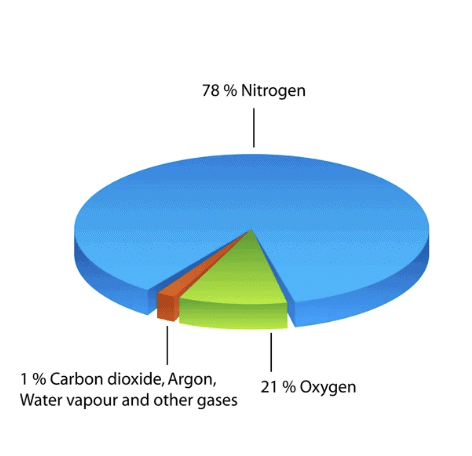
Temperature and Density
- The density of the atmosphere changes with height. It is highest at sea level and decreases rapidly as we go higher into the atmosphere.
- This decrease in air density at high altitudes makes it difficult for climbers to breathe, which is why they need to bring oxygen cylinders when they climb very high mountains.
- Temperature also decreases as we go up through the atmosphere.
Atmospheric Pressure and Wind
- The atmosphere exerts pressure on the Earth, and this pressure varies from place to place. Some areas have high pressure while others have low pressure.
- Wind is created when air moves from areas of high pressure to areas of low pressure.
4. Biosphere: The Domain of Life
The narrow zone of contact between the lithosphere, hydrosphere and atmosphere is called the biosphere.

- The biosphere is a small zone where land, water, and air meet and support life on Earth.
- It contains various living organisms, from tiny microbes to large animals, all connected and dependent on each other.
- Organisms in the biosphere are divided into the plant kingdom and animal kingdom.
The Earth's domains (land, air, water) affect each other. For example:
1. Deforestation for wood or farming can cause soil erosion.
2. Natural disasters like earthquakes or tsunamis can change the land, such as parts of the Andaman and Nicobar Islands sinking underwater during a tsunami. - Pollution harms the environment:
1. Waste dumped into rivers and lakes makes water unsafe and damages aquatic life.
2. Emissions from factories, power plants, and vehicles pollute the air.
3. An increase in carbon dioxide (CO₂) leads to global warming by raising Earth's temperatures. - It is important to use resources wisely to maintain balance between land, air, and water and protect nature.
Frequently Asked Questions (FAQs)
Ques: What are the four major domains of the earth?
The four main domains of the earth are Lithosphere, atmosphere, hydrosphere, and biosphere.
Ques: Which two continents lie fully in the Southern Hemisphere?
Australia and Antarctica lie completely in the Southern Hemisphere.
Ques: What are the Different Layers of the Atmosphere?
The troposphere is at the bottom and followed by stratosphere, mesosphere, thermosphere and exosphere.
FAQs on Class 6 Geography Chapter 5 Notes - Major Domains of the Earth
| 1. What is the lithosphere and why is it important? |  |
| 2. How does the hydrosphere interact with the lithosphere? |  |
| 3. What role does the atmosphere play in the biosphere? |  |
| 4. What are the key components of the biosphere? |  |
| 5. How do human activities impact the major domains of the Earth? |  |
















